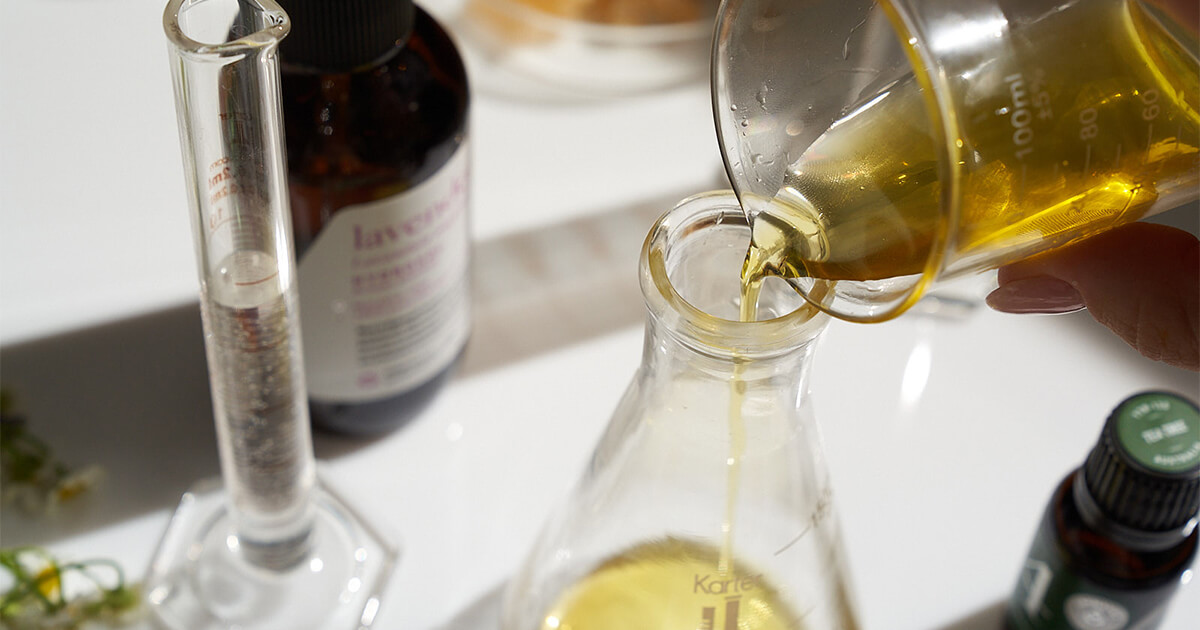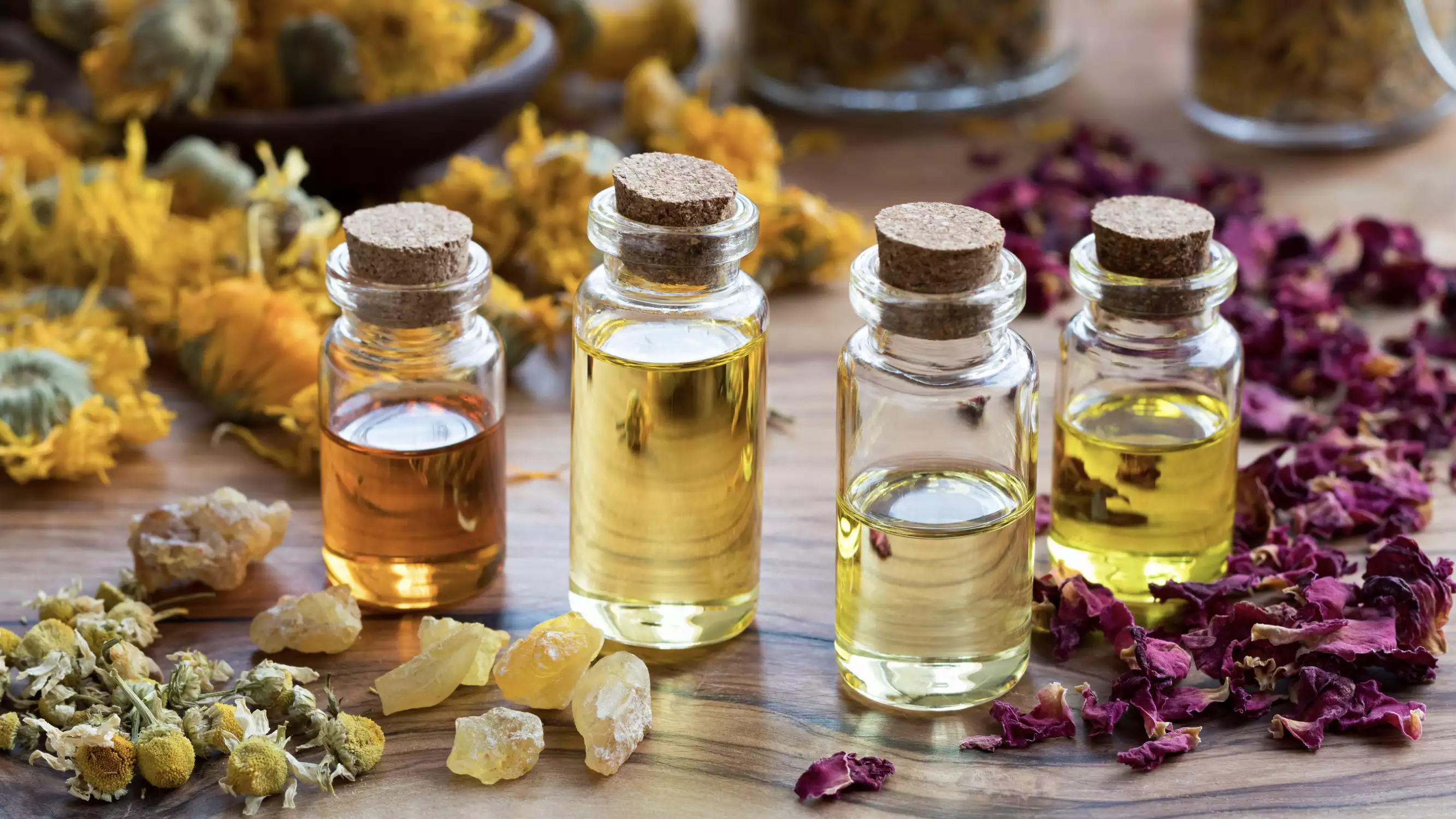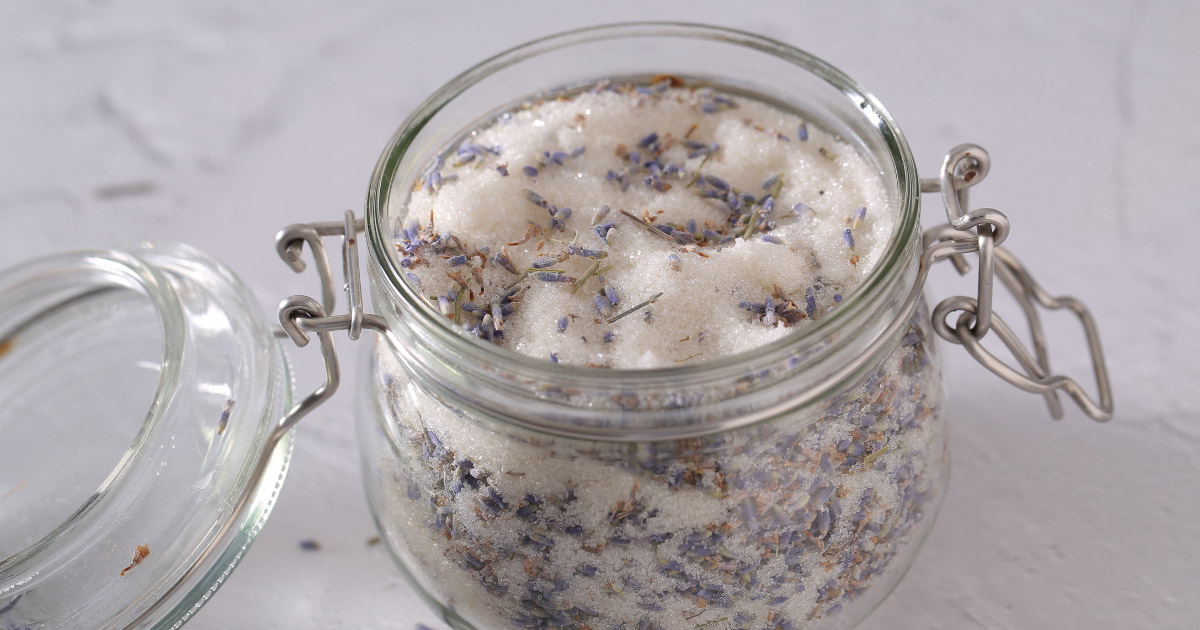How Advanced Aromatherapists Create Blends That Get Results

Advanced Aromatherapy Blending = Incredible and Consistent Results!
Learning advanced methods will give you the results you’re looking for from your essential oil blends, helping you gain new levels of confidence! As you advance, you’ll go from generalities and a trial-and-error approach, to decisions backed by science and research. The key to consistent results that truly impact health and wellness comes down to understanding the complexities of the chemical components contained within each essential oil.
Let’s say you want to take extra steps to support your immune health by making a cold & flu support blend. Where would you start and how would you ensure the blend you make will deliver the results you’re looking for?
You can do a few online searches to see what people are saying about which essential oils help prevent colds & flu. But there’s a lot of misinformation floating around online. How can you tell whether the info you find is grounded in research . . . or just wishful thinking?
When you understand advanced aromatherapy blending, you don’t HAVE to rely on hearsay. You’ll know which oils to choose based on their chemistry.
For example, you’d know that oils rich in monoterpenes are a great place to start to support your immune system during cold and flu season.
What are Monoterpenes?
There are entire courses that go into depth about the fascinating nuances of essential oil chemical components! To keep things short and simple, we’ll quickly explain that monoterpenes are molecules with 10 carbon atoms, separated into two 5-carbon halves.
There are a lot of different monoterpene molecules—or “components”—in essential oils, and many of them have similar therapeutic effects.
Essential oils high in monoterpenes are often:
Anti-inflammatory
Antibacterial
Antiviral
Decongestant
Immune supportive
Mood boosting
With benefits like these, it’s easy to see why monoterpenes are such powerful allies during cold & flu season! Armed with this knowledge, you have a far better opportunity to create a strong blend.
Common Monoterpenes in Essential Oils
Most monoterpene names end in the suffix “–ene.” If you look at essential oil GC/MS reports (lab reports that list the oils’ individual components), you’ll notice a lot of different monoterpenes showing up. We don’t have enough room to list them all here!
Here are some details about the benefits and uses of three common monoterpenes.
d-Limonene – Along with reducing the presence of germs, d-limonene has been shown to activate white blood cells and calm inflammation (including respiratory inflammation). It’s an excellent choice for any immune support blend! It’s also a mood-booster, able to soothe anxiety, stress, and heavy emotions. It’s the main component in all citrus oils.
α-Pinene – You might guess that this component shows up in a lot of conifer oils, including cypress! It’s also present in others, like frankincense. α-Pinene helps clear germs, calm inflammation, and inspire positive emotions (much like d-limonene). Think of the inner peace that frankincense instills, and you’ll get a sense of α-pinene’s emotional benefits.
β-Pinene – This component is related to α-pinene. It has some similar effects . . . and also some different ones! It calms inflammation, and it’s an excellent antioxidant, meaning it protects cells from being weakened by destructive free radicals.
Building An Effective Cold & Flu Blend Based on Chemical Components
Let’s use advanced aromatherapy blending to make a cold & flu blend rich in these three immune-supporting monoterpenes!
In addition to selecting ideal essential oils for the task at hand based on their chemical components, advanced aromatherapists are also able to make informed choices about application methods. A body oil would be an excellent choice for a monoterpene-rich cold & flu blend, since monoterpenes are small molecules that are easily absorbed by the skin. Some of them even enhance skin penetration, which means the molecules can enter your bloodstream more easily.
Apply this blend to your skin on days when you’d like an extra layer of protection for your immune health—either as a hand oil or an all-over, moisturizing body oil.
Monoterpene Cold & Flu Care Oil
Apply to your skin when you'd like an extra layer of protection for your immune health.
Ingredients
1 fl oz (30 ml) Jojoba Oil (Simmondsia chinensis)
6 drops Sweet Orange Oil (Citrus sinensis)
3 drops Balsam Fir Oil (Abies balsamea)
3 drops Cypress Oil (Cupressus sempervirens)
Equipment
One 1 oz (30 ml) glass bottle
Directions
Combine the jojoba and essential oils in the bottle.
Close the cap and shake gently.
Why We Chose These Essential Oils
This blend is super rich in d-limonene! Sweet orange oil contains over 90% of the immune-boosting component, which is why we used it as the main oil for this blend.
Citrus Oil Safety Note!
We could have chosen almost any citrus oil to get this much d-limonene, but citrus oils come with a catch: many of them are phototoxic, meaning they can cause painful skin reactions in sunlight. If you apply a citrus oil to your skin in a high enough concentration, and then expose that skin to sunlight (or a UV tanning bed), you can get blisters or skin discoloration.
You can use phototoxic citrus oils safely if you understand a few key principles.
We definitely want to avoid phototoxic reactions! Sweet orange is NOT a phototoxic citrus oil, so we’re safe using it as the main oil in this blend.
Next, balsam fir oil contains BOTH α- and β-pinene! Together, they make up over 30% of the oil’s composition.
And finally, we have cypress oil. It contains over 45% α-pinene.
Of course, the exact percentages of each component will be different in each batch of essential oil. For example, one season’s distillation of cypress might contain over 50% α-pinene. While the next season’s batch might only have around 40%.
The variations show up thanks to changes in regional rainfall, dryness, sunshine, soil quality, and more factors that affect the plants as they grow. It’s very natural and makes each batch of essential oil unique. GC/MS reports identify all the chemical components in essential oil and their exact amounts, so learning to look at these reports when purchasing essential oils will help you understand the exact levels of chemical components in each bottle you buy.
Natural Health with Advanced Aromatherapy Blending
Now you have a super-charged cold & flu blend full of powerhouse essential oils! Although there’s no way to guarantee you won’t get sick, this blend gives you a strong shield to safeguard your immune health.
It combines a variety of similar molecules, giving you cold & flu support from different angles.
It may reduce your symptoms and help you bounce back more quickly if you do come down with something.
This article explores just one example of how advanced aromatherapy blending can help you make truly effective blends. Instead of just choosing an oil that’s said to be good for immune support (or hoping the info you find online is at least semi-accurate), you’ll know which oil to choose, why it works, and the best way to use it. And you’ll be able to explain your choices to others!
Since there are hundreds of chemical components found in varying concentrations in 90+ different essential oils, you can begin to see just how much there is to know about these amazing and powerful substances. There’s always more to learn, and the more you know, the more consistently effective your essential oil blends will become.
References
Astani A, Reichling J, Schnitzler P (2010) Comparative study on the antiviral activity of selected monoterpenes derived from essential oils. Phytotherapy Research 24(5):673-9. doi: 10.1002/ptr.2955
Da Silva AC, Lopes PM, de Azevedo MM, Costa DC, Alviano CS, Alviano DS. (2012) Biological activities of α-pinene and ß-pinene enantiomers. Molecules 2012 17, 6305–16.
Dorow, P., Weiss, T. H., Felix, R., & Schmutzler, H. (1987). [Effect of a secretolytic and a combination of pinene, limonene and cineole on mucociliary clearance in patients with chronic obstructive pulmonary disease]. Arzneimittel-Forschung, 37(12), 1378-1381.
Guimarães AG, Quintans JSS, Quintans-Júnior LJ. (2013) Monoterpenes with analgesic activity – a systematic review. Phytotherapy Research 27,1-15.
Hirota, R., Roger, N.N., Nakamura, H., Song, H.-S., Sawamura, M., and Suganuma, N. (2010) Anti-inflammatory effects of limonene from yuzu (Citrus junos Tanaka) essential oil on eosinophils. Journal of Food Science 75, 87-92.
Liapi C, Anifandis G, Chinou I, Kourounakis AP et al. (2008) Antinociceptive properties of 1,8-cineole and beta-pinene, from the essential oil of Eucalyptus camaldulensis leaves, in rodents. Planta Medica 74,7,789. doi: 10.1055/s-2007-990224
Lima, N.G., de Souza, D.P., Pimenta, F.C., Alves, M.F., de Souza, F.S., (2012a) Anxiolytic-like activity and GC-MS analysis of (R)-(+)-limonene fragrance, a natural compound found in foods and plants. Pharmacology, Biochemistry and Behavior 103, 450-454
Perry, N. and Perry, E. (2006) Aromatherapy in the management of psychiatric disorders: clinical and neuropharmacological perspectives. CNS Drugs 20, 4, 257-280.
Raphael TJ, Kuttan G. (2003) Immunomodulatory activity of naturally occurring monoterpenes carvone, limonene, and perillic acid. Immunopharmacol Immunotoxicol. May;25(2):285-94. doi: 10.1081/iph-120020476. PMID: 12784919.
Takayama, K., Nagai, T. (1994) Limonene and related compounds as potential skin penetration promoters. Drug Development and Industrial Pharmacy 20, 4, 677-684.





